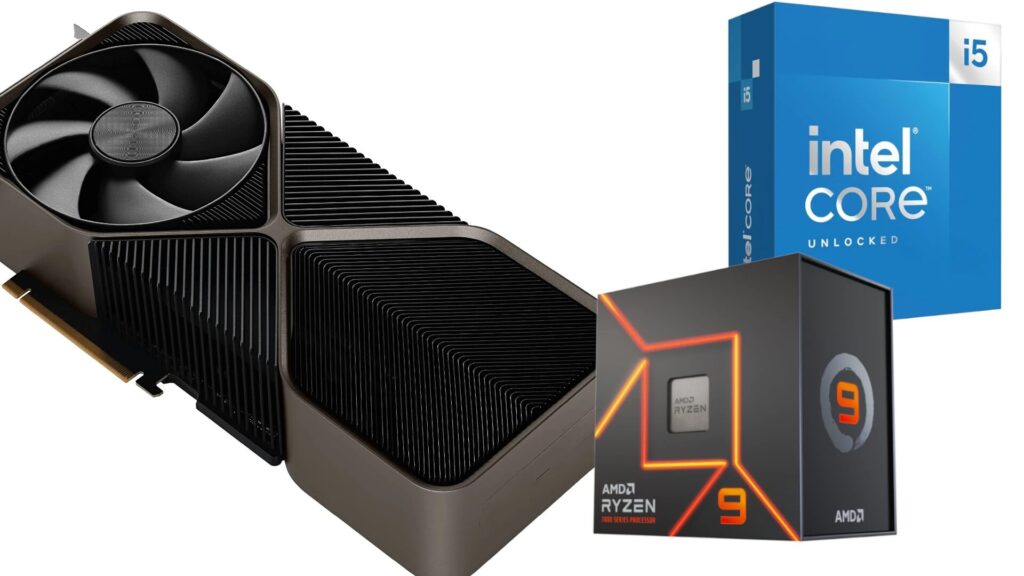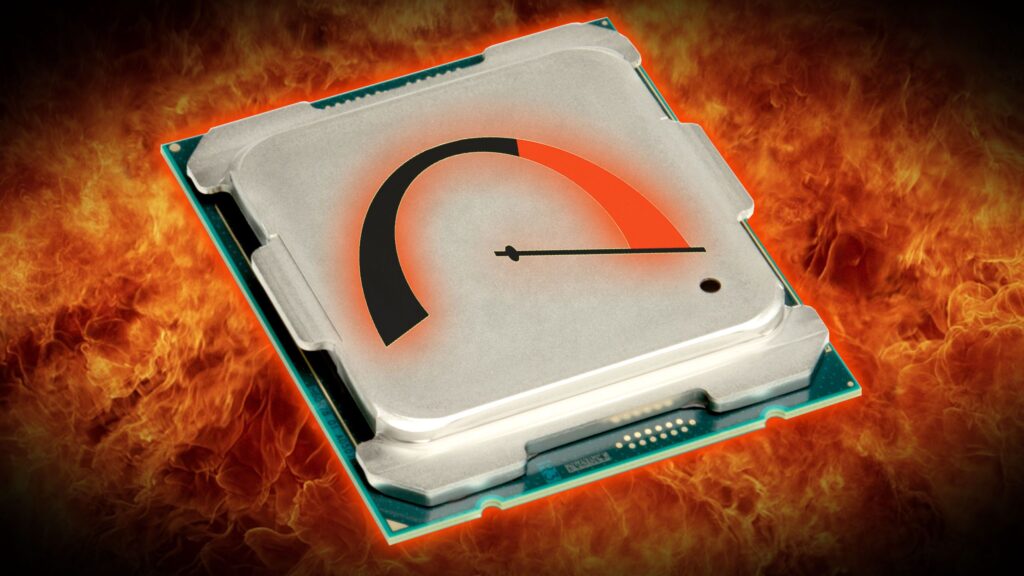Temperature monitoring is the process of keeping track of your computer’s processor (CPU) and graphics card (GPU) heat levels. Both the CPU and GPU generate heat as they perform tasks, especially when handling demanding applications such as games, 3D rendering, or video encoding. Monitoring these temperatures helps you ensure that your components are operating within safe limits.
Why is Temperature Monitoring Important?
If the CPU or GPU gets too hot, it can lead to thermal throttling, where the component automatically reduces its performance to avoid damage. In extreme cases, prolonged high temperatures can lead to system crashes, reduced lifespan, or even permanent damage. That’s why it’s vital to monitor the temperature regularly to keep your system safe and performing optimally.
The Ideal CPU and GPU Temperatures:
1. Normal Operating Temperatures:
Most CPUs and GPUs are designed to operate safely at certain temperature ranges. For CPUs, temperatures between 40°C to 75°C during regular operation are normal, while GPUs typically sit between 40°C and 85°C depending on the workload.

2. Dangerous Temperature Ranges:
Any temperature above 90°C for a CPU or GPU is generally considered dangerous. For extended periods, such high temperatures can cause permanent damage. It’s best to ensure that your components remain well below these limits.
Tools for Monitoring CPU and GPU Temperatures
1. Hardware vs. Software Solutions:
Monitoring CPU and GPU temperatures can be done through both hardware and software solutions. Hardware solutions often include thermometers attached to critical points in your system, but software solutions are more common and user-friendly.
2. Best Free Software for Monitoring CPU and GPU Temps:
Several free programs allow you to monitor your CPU and GPU temperatures effectively:
- HWMonitor
HWMonitor is a popular tool that provides detailed information about your system’s hardware, including CPU and GPU temperatures. It’s simple to use and offers real-time monitoring. - MSI Afterburner
Primarily known for overclocking, MSI Afterburner also offers excellent temperature monitoring for GPUs. It works with most graphics cards, not just MSI-branded ones. - Core Temp
Core Temp is a lightweight program that focuses specifically on monitoring CPU temperatures. It provides real-time readings and allows you to track temperature spikes. - SpeedFan
SpeedFan not only monitors CPU and GPU temperatures but also allows you to control fan speeds. It’s a versatile tool that gives you more control over your system’s cooling.
How to Keep an Eye on CPU Temperature
1. Using Built-In BIOS/UEFI Tools:
Most modern motherboards include built-in BIOS/UEFI tools that allow you to monitor your CPU temperature. You can access these tools during boot-up by pressing a specific key (usually DEL or F2).
2. Monitoring CPU Temps via Software:
Using software like HWMonitor or Core Temp, you can keep an eye on your CPU temperatures in real-time while using your computer. These tools display temperature data in a user-friendly interface, making it easy to identify any overheating issues.
3. Understanding Temperature Readings:
Temperature readings can fluctuate depending on the workload. For example, a higher CPU load while gaming or editing videos will naturally lead to higher temperatures. It’s essential to monitor these readings consistently to identify any abnormal spikes or sustained high temperatures.
How to Monitor GPU Temperature:
1. Using Manufacturer Software:
Many GPU manufacturers, like NVIDIA and AMD, provide software tools to monitor your GPU temperature. NVIDIA Control Panel and AMD Radeon Software offer detailed temperature statistics.
2. GPU-Z for Detailed Readings:
GPU-Z is a lightweight utility that provides in-depth information about your graphics card, including temperature readings, load percentages, and power consumption. It’s an excellent tool for monitoring GPU health.
3. What to Do If Your GPU Gets Too Hot:
If your GPU temperature exceeds 85°C regularly, you might want to consider improving the cooling solution, reapplying thermal paste, or lowering your graphical settings during intensive tasks.
Preventing Overheating in CPUs and GPUs
1. Importance of Good Airflow:
One of the easiest ways to prevent overheating is by ensuring good airflow within your computer case. Make sure that your fans are working correctly and that there’s enough space for air to circulate.
2. Thermal Paste Application:
Thermal paste is applied between your CPU/GPU and their coolers to enhance heat transfer. Over time, this paste can degrade, so it’s essential to reapply it periodically to maintain optimal performance.
Upgrading Cooling Solutions
1. Air Coolers vs. Liquid Coolers:
Air coolers are typically more affordable and easier to maintain, while liquid coolers offer better cooling performance, especially for high-end systems. Choosing between the two depends on your budget and how much cooling you need.
2. Custom Water Cooling Loops:
For enthusiasts and overclockers, custom water cooling loops provide the best cooling performance, though they can be complex and expensive to set up.
Dealing with High Temperatures:
1. Adjusting Fan Curves:
Fan curves determine how fast your system’s fans spin based on the current temperature. Adjusting the fan curve allows you to increase cooling performance during heavy loads.

2. Underclocking Your Components:
If temperatures remain too high despite adequate cooling, underclocking your CPU or GPU can reduce heat output. While this reduces performance slightly, it can help protect your components from overheating.
3. Limiting Power Consumption:
Limiting your GPU or CPU’s power consumption can help lower temperatures. Software like MSI Afterburner allows you to adjust power limits easily.
4. Using Custom Fan Profiles:
Creating custom fan profiles allows you to specify exactly how your fans should respond to different temperatures, offering a more tailored cooling approach.
Conclusion:
Monitoring your CPU and GPU temperatures is crucial for maintaining the health and performance of your computer. By using the right tools and implementing effective cooling strategies, you can ensure that your system remains cool and avoids damage from overheating.
FAQ’s:
1. What is a safe CPU temperature while gaming?
A safe CPU temperature while gaming is typically between 60°C and 80°C, depending on the processor model and workload.
2. Can high temperatures permanently damage my GPU?
Yes, prolonged exposure to high temperatures can cause permanent damage to your GPU, reducing its lifespan or causing hardware failures.
3. Do all motherboards support temperature monitoring?
Most modern motherboards support temperature monitoring, but some older models may lack this feature.
4. How often should I check my CPU and GPU temperatures?
You should check your CPU and GPU temperatures regularly, especially during demanding tasks like gaming or video editing.
5. Will an overheating CPU cause my computer to crash?
Yes, if your CPU overheats, it can cause your system to crash or shut down to prevent further damage.













